|
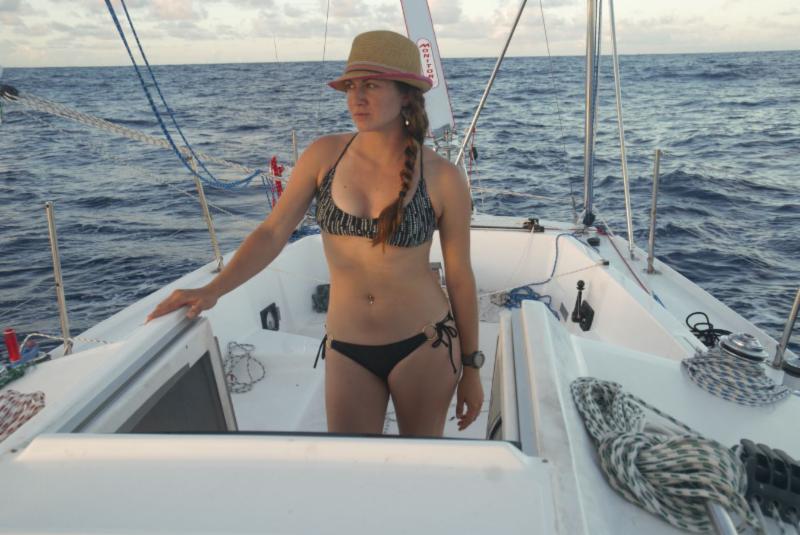
Sakura, Matt, and Nicole have developed a close partnership, having sailed together for about 30 days into their journey from San Francisco to Japan. Averaging about 120 - 135 miles per day while dragging their sampling net for marine plastics research, they have already traveled more miles than it would take to get from Annapolis, MD to England.

According to Matt, "Sailing from California to Hawaii is a downwind sleigh ride, once you find the easterly trades. After Hawaii, heading for Japan, things become a bit more complicated."
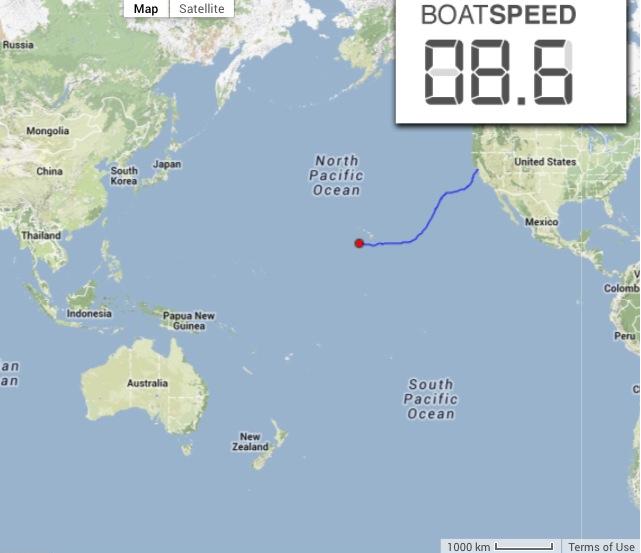
To ensure a safe passage in Japan, Matt, Nicole, and Sakura must arrive before July 1, as this is the beginning of typhoon season.
Sakura has been traveling in the trade winds represented by the dark blue bands in the weather map below. As the season progresses, the contrast between the warm air and cool water creates the low pressure systems (green) which develop into storms (orange). Matt will have to carefully navigate Sakura between these storms as they approach Japan.

Matt has confidence in Sakura, stating that "The Harbor 29 does well in light winds mostly due to its monstrous 46 foot tall mast (50 feet off the water!). That's an incredible amount of sail area for such a small sailboat. It also does fine in stronger winds as we have three very deep reefs and running backstays. To balance out this powerful rig, Sakura has a womping six foot, three inch draft with a 45% ballast to displacement ratio.
"These numbers are off the chart for a boat this small. She couldn't be more different than our 42-foot, steel-hulled, cat-rigged schooner we used for our Atlantic Gyre research last summer. It's nice to change things up once in a while."
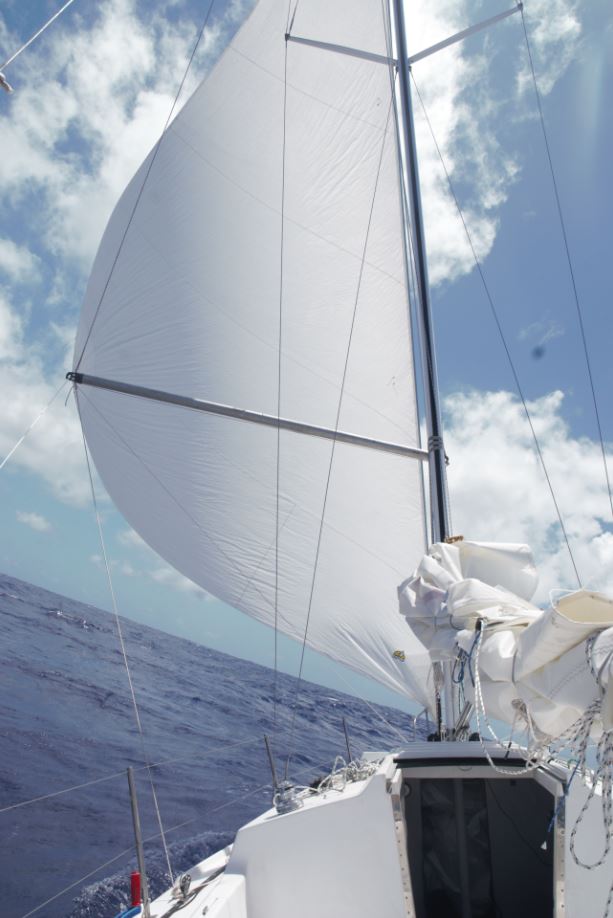
Sakura is currently 15 days ahead of her initially estimated 75-day schedule. Her best time so far has been 70 nautical miles traveled in 7 hours - an average of 10 knots for that period. These speeds are good for a boat laden with 2000 lbs of gear and dragging a hydro generator. Dragging the hydro generator in the water is equivalent to leaving a small outboard in gear behind the boat at all times. Matt also sails conservatively. He never pushes the boat nor overcanvases her.

Their expedition is the first in history to encompass a continuous continent-to-continent marine plastics survey.

During the first phase of their journey, Matt and Nicole were able to map the southeastern edge of the North Pacific Gyre (AKA Pacific Garbage Patch), which had not yet been accomplished.
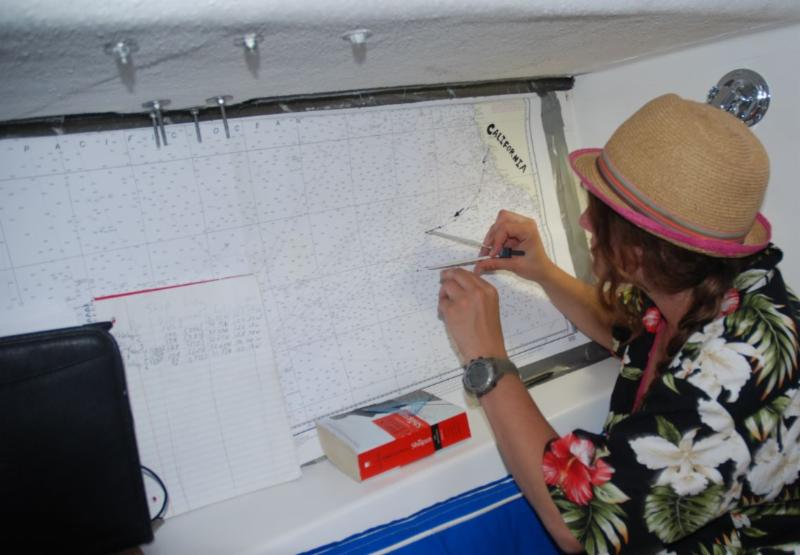
In the second phase, they will be collecting micro plastics samples in the easterly trades. With the research data that they gather in the second this phase, they can do a comparative study with data from already sampled gyre region to determine how much of the plastic pollutants are displaced from the gyre by the trade winds.
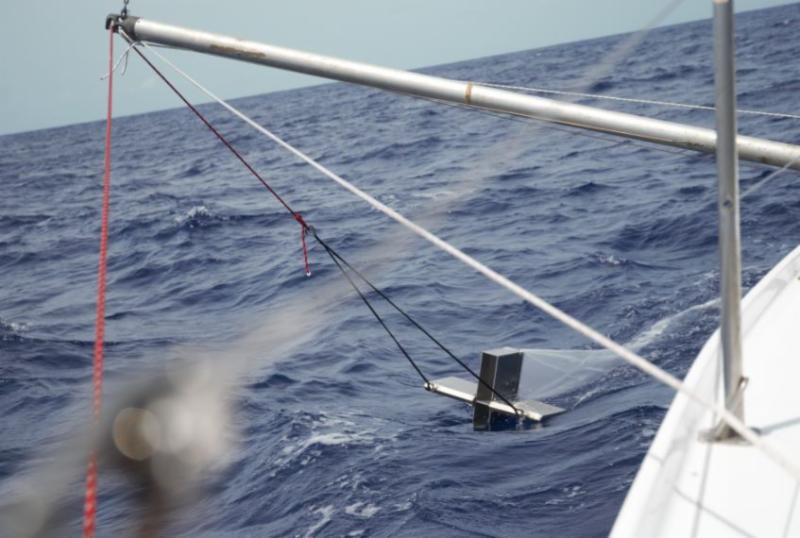
Each day, Matt and Nicole get up, write a report in the ship's log book, and prepare their net to take samples. Preparing to collect samples can take about a half an hour, as they must set up a spinnaker pole in order to drag the net in undisturbed water, and they must also deploy a drogue to maintain a speed of 3.5 knots or lower to prevent damage to their net.
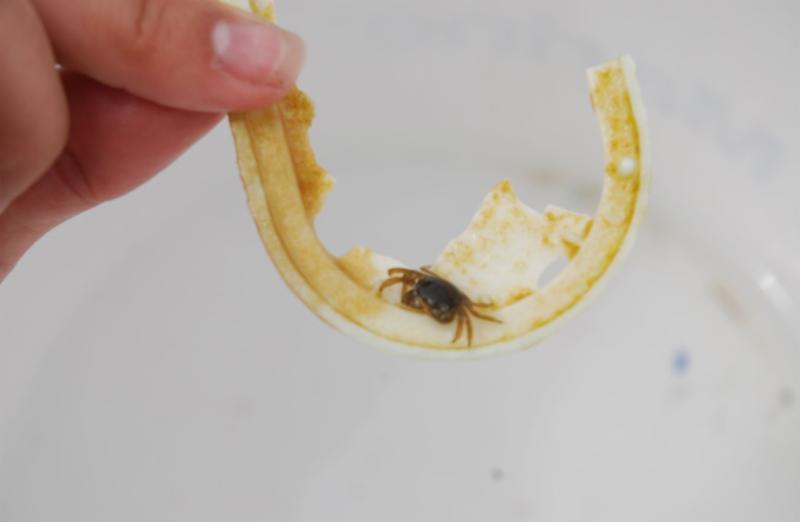
While collecting samples, Matt and Nicole take turns pumping the water maker to generate the drinking water required for the next 24 hours. Once the sample collection has been completed for the day, the equipment is hauled back in and the data is cataloged for future analysis.
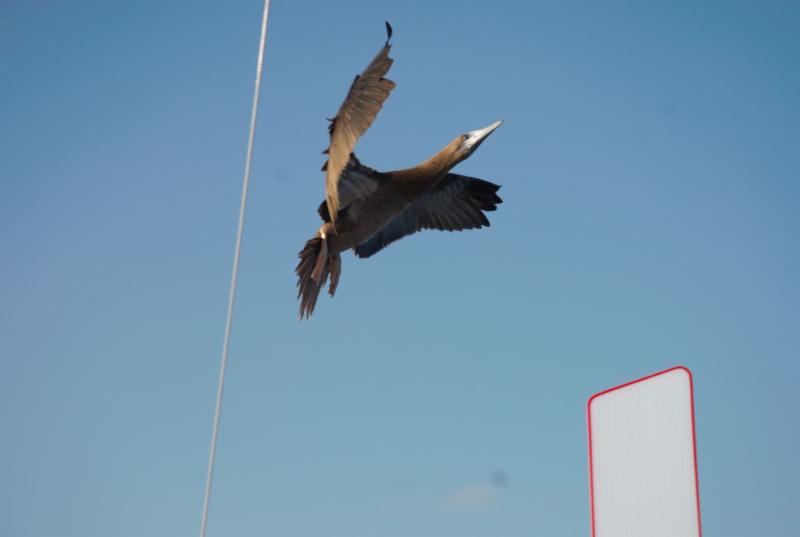 | |
Matt and Nicole receive another visitor.
|
Matt claims that "for every hour spent collecting samples we have to spend ten hours processing the samples in a laboratory in Baltimore (Baltimore underground science space). We count the amount of microplastics per sample, analyze the DNA of various foreign bacteria hitchhiking a ride on the plastics and also analyze the plastics for different pollutants."
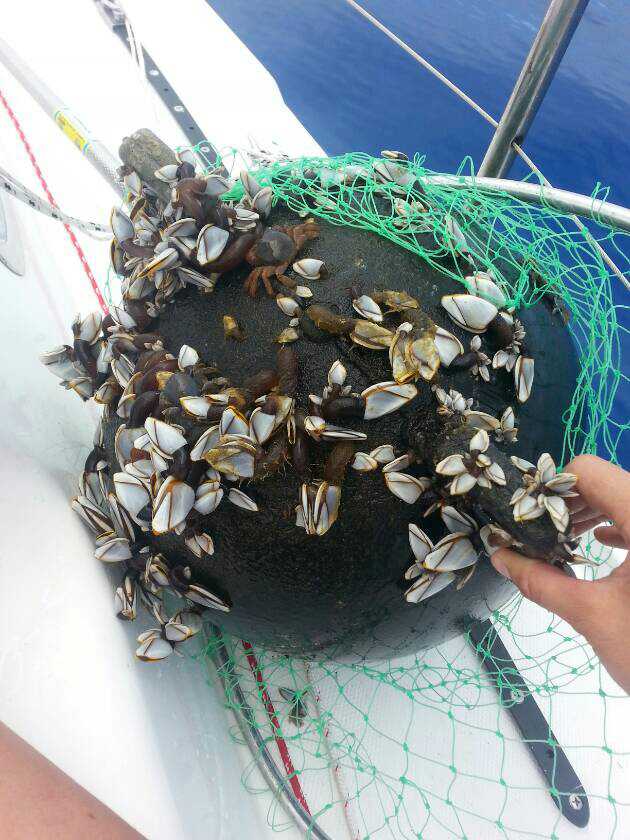
Sakura's expedition continues a tradition of strong Schock-built sailboats on blue water. There's the story of Dreadnaught, the Santana 20 sailed for 9 days in Atlantic gales, and also that of the 35-year old Santana 35 sailed throughout the Pacific. There was even a Santana 22 used as a cargo delivery vessel in the Mariana Islands.
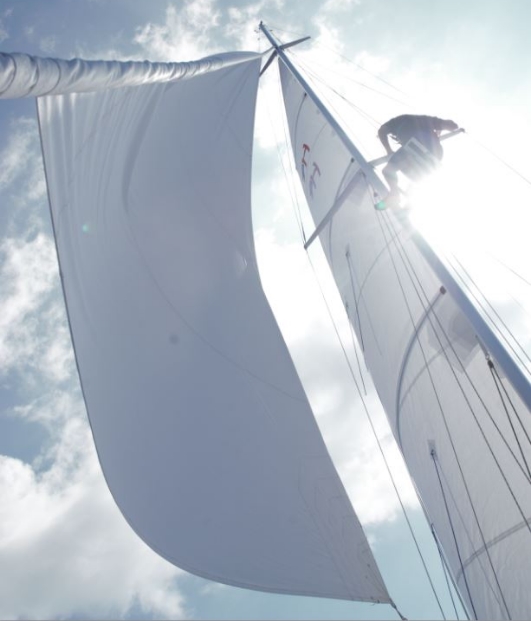
Even as adventurous as any of these other voyages, Sakura's expedition is all for science. When her journey is complete, Matt and Nicole will still have a full research schedule ahead of them. Their next project will be a biotelemetry fisheries study in the Chesapeake Bay sponsored by the Smithsonian. In 2015, they plan to research water quality along a seldom-tracked area off of the East Coast of Greenland.
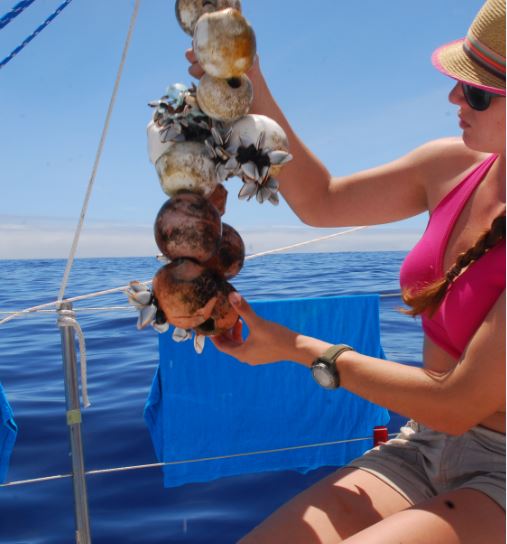
For more news about Sakura's voyage or Matt and Nicole's research, please visit oceanresearchproject.org.

|